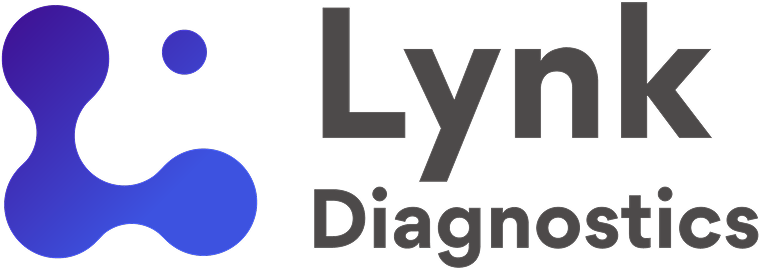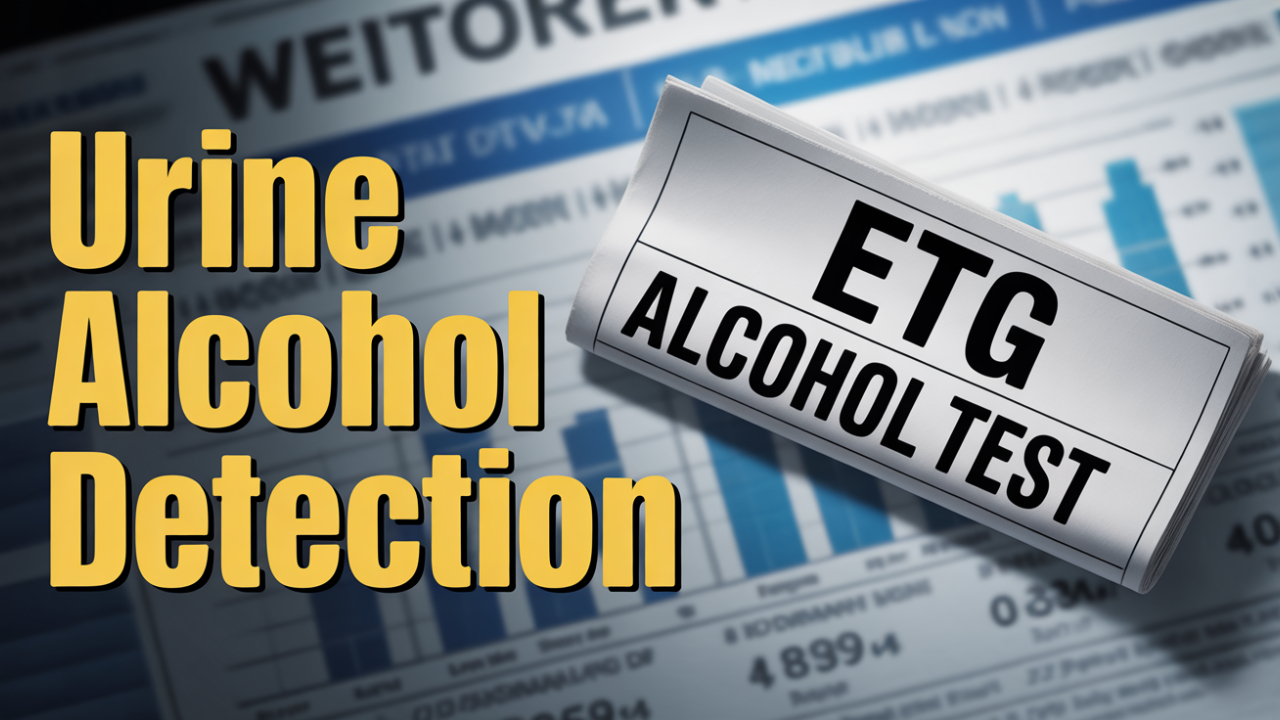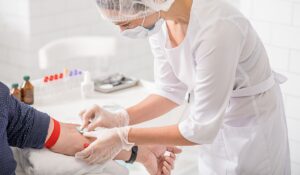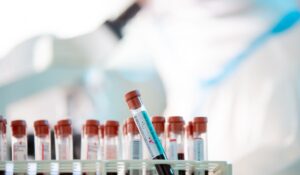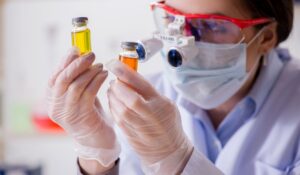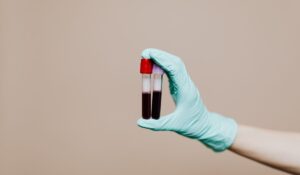How Long Can ETG Detect Alcohol In Urine?
Direct Answer:
Ethyl glucuronide (ETG) can be detected in urine for up to 80 hours—sometimes longer in cases of heavy drinking. It’s a direct metabolite of ethanol, and it’s one of the most reliable biomarkers used to detect recent alcohol consumption, even after the alcohol itself is gone.
At Lynk Diagnostics, we provide advanced alcohol testing—including ETG screening—to support physicians, treatment programs, probation monitoring, and employer drug testing requirements with clinical precision.
What Is ETG and Why Is It Important?
ETG stands for ethyl glucuronide, a chemical formed in the liver when ethanol is processed. It is created by a liver enzyme that attaches glucuronic acid to ethanol, forming a glucuronide conjugate. Unlike ethanol, which the body rapidly eliminates, ETG lingers and can be detected in urine long after intoxication.
This extended detection window makes ETG testing a valuable tool in fields like:
- Addiction recovery
- Mental health care
- Substance abuse screening
- Probation enforcement
- Dual diagnosis programs
The ETG test is not used to measure intoxication—it’s used to confirm alcohol exposure over the last few days. That’s a key distinction from tests that measure blood alcohol content (BAC).
Detection Timeline: How Long Does ETG Stay in Urine?
Alcohol Dose Type | ETG Detection Time in Urine |
One standard drink | 24–36 hours |
2–3 drinks | 36–48 hours |
Binge drinking (4+ drinks) | 48–72 hours |
Heavy or chronic use | Up to 80+ hours |
Detection depends on individual metabolism, hydration, body weight, genetics, diet, exercise habits, and liver function.
Alcohol Metabolism: From Ethanol to Metabolites
Once consumed, ethanol is processed by enzymes like alcohol dehydrogenase and aldehyde dehydrogenase. This breakdown leads to metabolites like acetaldehyde and acetate. In a separate pathway, the enzyme UDP-glucuronosyltransferase conjugates ethanol to form ETG.
ETG and ETS (ethyl sulfate) are both non-oxidative metabolites—they don’t contribute to intoxication but serve as biomarkers of alcohol use.
Because these markers are only present after ethanol ingestion, their presence in urine serves as a strong indicator of recent drinking behavior.
Clinical Uses of ETG Testing
1. Addiction Recovery & Relapse Prevention
Clinics use ETG testing to confirm abstinence in people undergoing alcohol use disorder treatment. ETG is especially helpful in cases where binge drinking may occur between appointments.
2. Mental Health & Dual Diagnosis
Alcohol use is tightly linked with mental health disorders. ETG helps monitor relapse in patients with depression, anxiety, or PTSD who are also under care for substance abuse.
3. Probation and Legal Requirements
Courts and probation officers use ETG tests to enforce zero-tolerance alcohol policies. Its sensitivity enables detection of even small exposures, helping agencies hold individuals accountable.
4. Pre-Surgical or Medical Evaluations
Physicians may order ETG tests before surgeries, during medication reviews, or when assessing patients for diseases like type 2 diabetes or ulcerative colitis where alcohol use complicates treatment.
Factors That Affect ETG Levels
Hydration & Urine Concentration
More drinking water may dilute urine and lower ETG concentration, but it won’t eliminate the marker altogether.
Liver Health
People with liver disease metabolize alcohol differently, which may delay or intensify ETG production.
Frequency of Drinking
Regular drinkers may retain ETG longer due to enzyme saturation and accumulation of metabolites.
Genetics & Gender
Variations in metabolism genes affect how efficiently alcohol is processed. Gender also plays a role, with women often retaining metabolites longer.
Body Weight and Diet
Fat stores affect alcohol distribution. A poor diet or weight loss drugs like semaglutide may change the liver’s metabolic output, though research on their interaction with ETG is still developing.
Physical Activity
Exercise has minimal effect on ETG clearance. While it may slightly increase metabolism, it does not significantly accelerate ETG elimination.
False Positives: Incidental Alcohol Exposure
Due to its high sensitivity, ETG tests can yield positive results after non-beverage exposure to ethanol, such as:
- Using mouthwash with alcohol
- Frequent hand sanitizer application
- Use of cosmetics containing ethanol
- Contact with alcohol-based cleaning products
- Eating sauces made with wine or beer
Most labs set cutoff thresholds (usually 100–500 ng/mL) to reduce false positives from incidental exposure. However, repeated minor exposures can accumulate.
ETG vs. Other Alcohol Tests
Test Type | Sample | Detection Window | Purpose |
ETG | Urine | Up to 80 hours | Detect past drinking (1–3 days) |
ETS | Urine | 24–48 hours | Used with ETG for confirmation |
PEth | Blood | Up to 21 days | Detect chronic or repeated drinking |
Ethanol (BAC) | Blood/Saliva | 6–12 hours | Measure current intoxication |
Phosphatidylethanol | Blood | Up to 3 weeks | Long-term exposure marker |
Hair ETG/PEth | Hair | Up to 90 days | Long-term alcohol use history |
ETG is ideal for short-term abstinence verification, while PEth and hair testing are suited for long-term behavioral assessment.
How Are ETG Tests Performed?
- Sample Collection: A clean urine test sample is collected in a clinical or supervised setting.
- Lab Analysis: High-performance mass spectrometry methods like LC-MS/MS detect ETG and sometimes ETS.
- Reporting: The lab reports concentrations, typically in nanograms per milliliter (ng/mL). Values above a cutoff threshold indicate alcohol use.
At Lynk Diagnostics, we follow clinical-grade protocols to ensure precise results and minimize risk of misinterpretation.
Can Medications Interfere With ETG Results?
Most medications—including semaglutide, naloxone, or common mental health drugs—do not interfere with ETG levels. However, cross-reactivity or secondary effects (like alcohol-based solvents in pills) could raise levels marginally.
Always provide a complete drug and medication list to your physician or testing center.
Can You Speed Up ETG Elimination?
No reliable method exists to flush ETG out faster. Common myths—such as drinking large amounts of water, excessive exercise, or “detox” drinks—have little to no impact.
Time and abstinence remain the only proven factors that reduce ETG levels.
Alcohol and the Brain: The Relapse Risk
Relapse isn’t just behavioral—alcohol alters brain chemistry and reward signaling, affecting dopamine, serotonin, and GABA. These changes can make a person more prone to substance abuse and mental health setbacks.
That’s why ETG testing is so vital—it provides real information about whether a patient is maintaining sobriety, allowing clinicians to make real-time decisions.
ETG Testing in Structured Programs
Many structured treatment systems, including Recovery Village and state-based SFC (Structured Family Caregiving), rely on ETG as a frequent screening measure.
Examples of usage frequency:
- Probation: Weekly or random
- Addiction centers: Twice weekly
- Employer programs: Pre-hire and routine
- Physician panels: Monthly
- Mental health: As needed during episodes
By confirming alcohol abstinence, programs help reduce risk, support recovery, and manage co-occurring conditions.
Alcohol and Chronic Health Conditions
Alcohol consumption worsens many health problems:
- Type 2 diabetes: Increases blood sugar volatility
- Ulcerative colitis: Causes flare-ups
- Liver disease: Leads to cirrhosis or fatty liver
- Weight gain: Alcohol is calorie-dense
- Brain inflammation: Impairs cognition and behavior
If alcohol use is suspected, ETG testing provides objective data to guide treatment adjustments.
Cosmetic & Lifestyle Considerations
Those undergoing ETG testing should avoid:
- Mouthwash (switch to alcohol-free versions)
- Hand sanitizers (use non-alcohol-based products)
- Perfumes and colognes
- Cooking with alcohol
- Over-the-counter meds with ethanol
Even small exposures—especially if frequent—can push ETG levels above test thresholds.
What ETG Levels Mean (General Guide)
ETG Level (ng/mL) | Interpretation |
<100 | Negative or incidental exposure |
100–499 | Low-level recent drinking possible |
500–1,000 | Moderate alcohol consumption |
>1,000 | Likely heavy or recent binge |
Values should always be interpreted in context. A physician or lab expert can explain results more thoroughly based on patient history.
How Lynk Diagnostics Can Help
At Lynk Diagnostics, we support clinics, providers, and families with ETG testing solutions that are accurate, secure, and easy to implement.
We offer:
- Lab-based ETG testing (urine or hair)
- Full drug test panels
- Dual diagnosis-compatible screening
- Mental health support protocols
- Result interpretation by certified toxicologists
Whether you’re tracking abstinence, checking for relapse, or verifying legal compliance, Lynk Diagnostics provides the tools to keep your patients, clients, or loved ones safe and accountable.
Conclusion: What to Know About ETG Detection
- ETG detects alcohol use for up to 80 hours after drinking.
- It’s highly sensitive, detecting even small or accidental exposures.
- It does not indicate intoxication but confirms alcohol exposure.
- The test plays a critical role in addiction, mental health, and legal monitoring.
- Factors like liver health, hydration, genetics, and exposure to cosmetics affect results.
Lynk Diagnostics is here to support accurate alcohol detection with cutting-edge laboratory tools and clinical expertise.
FAQs
1. Is it possible to test positive for ETG without drinking?
Yes. Using alcohol-based mouthwash, hand sanitizer, or cosmetics can result in trace ETG levels. Most labs set thresholds to filter out incidental exposure.
2. How long after binge drinking can ETG be found in urine?
After a binge (4+ drinks), ETG can remain detectable for up to 72–80 hours.
3. Does alcohol metabolism differ between men and women?
Yes. Gender, weight, and enzyme levels affect how quickly alcohol is broken down and how long ETG remains in the body.
4. Can a detox or cleanse remove ETG faster?
No. ETG is not affected by detox drinks, excessive hydration, or over-the-counter cleanses. Only time and abstinence work.
